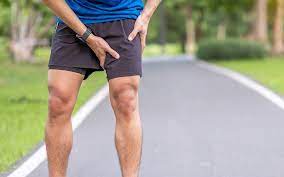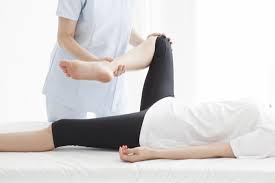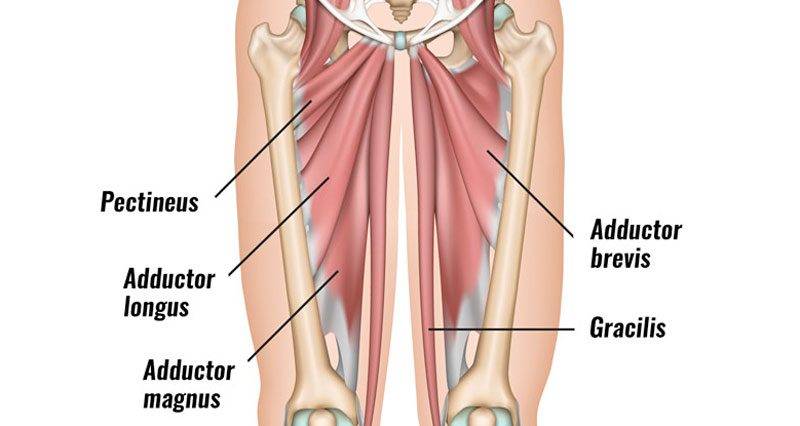A pulled groin injury is an injury that can cause you to miss a big game or important event. In this article, find out what pulled groin recovery time takes. To recover from a pulled groin yourself, the symptoms, and the treatment options available.
Contents
What is a Pulled Groin Injury?

A pulled groin is a common injury that can occur during physical activity. It’s often caused by the hamstring muscles pulling on the inguinal ligament, which helps support the hip joint. The injury can be relatively minor and cause mild pain, or it can be more serious and result in a pulled groin muscle tear. In either case, treatment typically includes rest, ic,e and ibuprofen. Depending on the severity of the injury, recovery time can range from several days to several weeks.
If you experience any pain or discomfort in your groin area, be sure to visit your doctor for an evaluation. If the injury is severe, you may need to undergo surgery to fix it.
Symptoms
The symptoms of a pulled groin vary depending on the location and severity of the injury. In general, they include:
- pain along the front of the thigh, especially when walking or standing
- a feeling of tightness or pulling in the groin area
- a decrease in the range of motion in the groin region
- an increased amount of tenderness or inflammation around the groin area
What causes a pulled groin?
A pulled groin is a common injury that can happen during any type of physical activity. It’s also known as a sports hernia, and it happens when the muscle in the groin area pulls on the inguinal ligament. This can cause pain and discomfort, and sometimes swelling.
A pulled groin is a type of sports injury that can occur when the adductor muscles, located along the inside of the thigh, are twisted or pulled. This can happen during activities like running, biking, or football where there is a lot of lateral movement. Other factors that can contribute to a pulled groin include tight muscles and ligaments, overuse, and poor form.
If you experience any type of pain or discomfort in your groin area, be sure to consult a doctor. There may be something more serious going on that requires professional care.
Diagnosis
The diagnosis of a pulled groin is typically based on the symptoms the individual is experiencing.
A doctor may perform a physical examination to rule out other causes of the symptoms, such as a hernia. The doctor may also do a scan or an ultrasound to check for any other abnormalities.
How to Treat a Pulled Groin?

If you sustain a pulled groin, the most important thing you can do is seek medical attention as soon as possible. If the individual has a pulled groin, the doctor may prescribe various treatments to help relieve the symptoms. These may include rest, ice, and a pain reliever. If the individual experiences significant pain, the doctor may also prescribe an injection of local anesthesia to reduce the pain.
If the individual does not have a pulled groin, further tests may be necessary to rule out other causes of the symptoms .The following are general guidelines on how to treat and recover from a pulled groin:
1. Severely pulled groins should be treated as an emergency. If you experience significant pain, swelling,g or blood loss, please seek professional medical help immediately!
2.Too reduce pain and inflammation, it is important to rest the injured area as much as possible. Avoid any strenuous activity that could aggravate the injury further. Try to elevate the injured area if possible.
3. Apply cold or ice packs to the injured area several times a daytoo reduce inflammation and pain.
4. Take ibuprofen or other mild painkillers such as acetaminophen when needed for relief from inflammation and pain.
5. Avoid weight-bearing exercises until the injury has healed completely; this will allow your muscles time to heal properly rather than putting undue stress on them prematurely.
6. Allow the injury to heal completely before returning to strenuous activity. If you experience discomfort or pain when doing everyday activities, please seek medical attention sooner rather than later.
Recovery time for a pulled groin
Recovery time for a pulled groin can vary depending on the severity of the injury. In most cases, the athlete will experience discomfort and some swelling. Treatment typically includes rest, ice, compression, and elevation. Depending on the severity of the injury, athletes may also require surgery to repair the muscle or tendon.
Most athletes recover within four to six weeks. However, depending on the extent of the injury, some may require more time to heal.
On average, recovery for an injured groin muscle can take between 4-12 weeks and estimates for each grade are below:
Grade 1: 4-6 weeks
Grade 2: 2-3 months
Grade 3: 4+ months
The initial phase of muscle healing entails the formation of scar tissue. This is a process that takes 7-10 days, and during this time you should allow for formation while easing into a more gentle range of motion.
After time and rest, the secondary phase of rehabilitation starts with weeks 1 to 3 dedicated to strength training for the groin muscles and all the muscles surrounding the hip and abdomen.
The final phase of recovery is set up to prepare you for a return to sports activities. You’ll work on rehab exercises like the range of motion and strength training before returning to your sport during weeks 3-6. Professional athletes have a bit more time, at weeks 8-12, so they’ll return to their previous levels and types of activity.
Conclusion
If you or a loved one has experienced pain in the lower abdomen, generally after exercising, there is a good chance that you have sustained a pulled groin injury. If left untreated, this injury can lead to prolonged discomfort and even further complications.
There are a few key things to remember when dealing with a pulled groin injury: rest, ice, and compression. These three simple steps should help speed up the healing process and ensure that you make a quick and full recovery.
Physical Therapy help patients recover from pain. If you’re experiencing Back pain, Shoulder pain, Knee pain, Neck pain, Elbow pain, Hip pain, or Arthritis pain, a physical therapist at MantraCare can help: Book a physiotherapy session.


